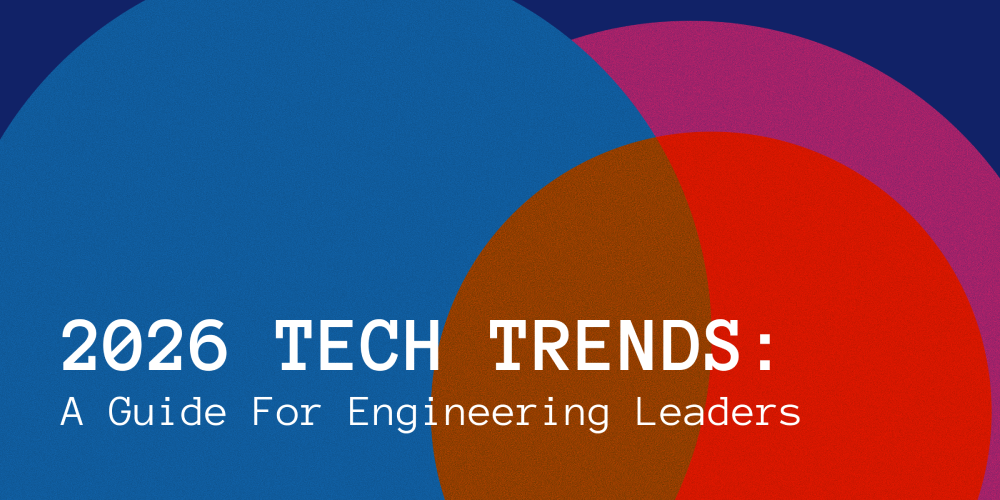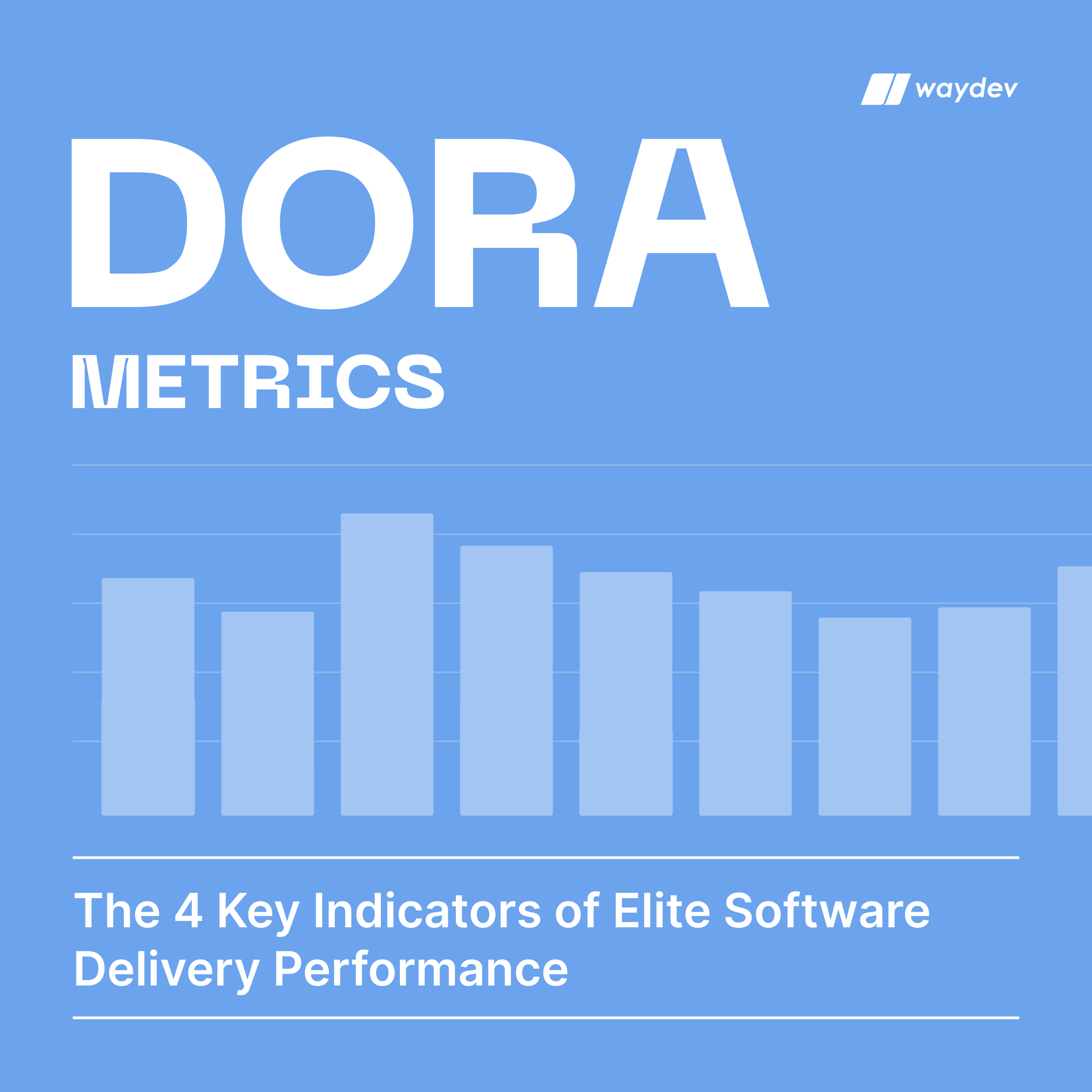1. Waydev AI Is Built on a Conversational Engine, Not a Dashboard Layer
Almost every competitor still relies on dashboards or static visualizations that require configuration, filters, and manual interpretation. DX, Swarmia, Jellyfish, Pluralsight Flow, LinearB, and Allstacks suffer from the same fundamental limitation: they show data but do not explain what it means.
Waydev flips the model entirely.
Your engineering data connects into a unified schema. Then the conversational engine turns every insight into plain language answers:
- “Why did cycle time spike this week?”
- “Which squads drive the most business impact?”
- “Where do we lose predictability in our delivery chain?”
- “What caused the slowdown in PR flow in the last 7 days?”
No competitor comes close to this. They rely on charts that require interpretation. Waydev gives answers that drive immediate action.
The Dashboard Problem in 2026
Think about how engineering leaders actually work. You’re in back-to-back meetings. You get a Slack message asking about team velocity. You have 90 seconds to respond before your next call.
With traditional tools, you need to:
- Open the platform
- Navigate to the right dashboard
- Apply the correct filters
- Interpret multiple charts
- Cross-reference with other views
- Synthesize the answer yourself
With Waydev, you ask the question and get the answer. The difference isn’t incremental. It’s transformational.
DX (now owned by Atlassian) tried to address this with their acquisition, but their dashboard-first architecture remains fundamentally unchanged. Swarmia offers clean visualizations but still requires you to know what you’re looking for. LinearB automates workflows but doesn’t answer strategic questions. Jellyfish provides investment tracking but still locks you into navigating complex dashboard views.
Waydev was architected from day one for natural language interaction. This isn’t AI bolted onto dashboards. It’s AI as the primary interface, with visualizations supporting the conversation when needed.
2. Waydev Core 4 Is the Most Accurate Productivity Framework in the Market
DX built its own Core 4 model, and it validated the need for multi-dimensional productivity measurement. But Waydev’s Core 4 is the next evolution, adding AI context, business alignment, and multi-system correlation that no competitor has achieved.
The Competitor Fragmentation Problem
Most competitors only measure one dimension well:
- DX focuses on their Core 4 framework but lacks AI-powered analysis and business alignment
- Jellyfish focuses on investment allocation and resource management
- Swarmia focuses on workflow agreements and team health
- LinearB focuses on pipeline automation and developer workflows
- CodeClimate and Pluralsight Flow focus on code quality signals
- Allstacks focuses on forecasting and capacity planning
- Faros.ai focuses on data graph aggregation across tools
Each does their niche reasonably well. But engineering productivity isn’t a single dimension. It’s the intersection of effectiveness, speed, quality, and business impact.
Waydev Core 4 unifies all four dimensions:
- Effectiveness: Are teams working on the right things that drive business outcomes?
- Speed: How quickly can teams deliver from idea to production?
- Quality: Are we building sustainably with manageable technical debt?
- Impact: What business value are engineering investments actually generating?
This holistic approach allows teams to benchmark accurately and improve systematically rather than chasing isolated metrics that create perverse incentives.
Why Partial Solutions Fail
CodeClimate might tell you code quality is declining, but not why or what to do about it. LinearB might accelerate your pipeline, but without understanding if you’re accelerating the right work. Jellyfish might show investment distribution, but not whether that investment translates to business impact. DX provides their Core 4 metrics, but without conversational AI to explain what they mean in your specific context.
Waydev connects the dots. When cycle time increases, the system doesn’t just flag it. It analyzes whether it’s due to larger PRs, longer review times, more complex work, or resource constraints. Then it suggests specific, actionable improvements based on your team’s patterns.
3. True Business Alignment Through Impact Insights
Jellyfish built its business on “engagement categories” for investment alignment. It was innovative in 2019. But in 2026, manual categorization and rigid tagging systems are relics of a bygone era.
Waydev exceeds Jellyfish’s approach with Impact Insights, AI-powered mapping that connects engineering work to business outcomes without manual overhead.
Where Waydev Wins:
- No manual tagging: Engineers don’t add categories to tickets
- No rigid frameworks: The system adapts to your business model, not vice versa
- No lost work tracking: AI identifies patterns even in uncategorized work
- Automatic business alignment: Work is mapped to outcomes through intelligent analysis of commit messages, PR descriptions, ticket content, and deployment patterns
Jellyfish requires constant tuning and organizational discipline to maintain categorization accuracy. As your business evolves, categories become stale. As teams grow, consistency breaks down.
Waydev requires none of this. The AI continuously learns from your engineering patterns and business context, automatically identifying which work drives customer value, which reduces technical debt, which enables future capabilities, and which is necessary operational overhead.
4. Superior Integrations with Both Developer Tools and AI Coding Assistants
Competitors integrate with GitHub, GitLab, Jira, and Azure DevOps. That was sufficient in 2020. But in 2026, engineering productivity is increasingly mediated by AI tools, and traditional platforms are blind to this revolution.
Waydev is the first engineering intelligence platform that integrates natively with:
- GitHub Copilot usage and acceptance patterns
- Cursor AI-assisted coding sessions
- Code reviews generated or augmented by AI
- AI assist tools for testing and refactoring
- Context switching between human and AI-generated code
Why This Matters Critically
Your team’s productivity is no longer just commits, PRs, and deployment frequency. It includes:
- How effectively developers use AI coding assistants
- Which AI-suggested code gets accepted vs. rejected
- How AI impacts code review quality and speed
- Where AI accelerates development vs. where it introduces issues
- How AI usage patterns differ across teams and individuals
Traditional metrics miss this entirely. Competitors cannot see this. Waydev can.
5. Predictability 2.0 Gives Accurate Delivery Forecasts
Forecasting delivery timelines is notoriously difficult. Allstacks and Oobeya attempted to solve it, but both remain fundamentally limited by old statistical models, rigid sprint structures, and no real-time context about current blockers.
Waydev Predictability 2.0 uses AI to evaluate:
- Historical work patterns across similar initiatives
- Current team capacity and availability
- Blocked PRs and dependency chains
- Code complexity and review patterns
- Risk factors in both code and delivery processes
- External dependencies and their historical reliability
This creates forecasts that are genuinely useful for planning, not just statistical projections that prove wrong the moment reality intervenes.
6. Waydev Agents Perform Work That Competitors Expect Humans to Do
This is the new frontier, and where Waydev’s AI-native architecture truly shines.
Waydev has task-specific agents that:
- Summarize team and individual performance across any timeframe
- Flag anomalies before they become problems
- Generate corrective action recommendations with context
- Send automated weekly executive reports
- Evaluate delivery risks with probability assessments
- Highlight anti-patterns and suggest process improvements
Where competitors provide charts, Waydev provides ongoing intelligent assistance.
Traditional Tools
Engineering manager opens dashboard → Spots concerning trend → Manually investigates → Cross-references metrics → Identifies teams → Drafts plan → Creates report
Time: 2-3 hours
Waydev Agents
Agent flags trend → Provides root cause → Suggests actions → Drafts communication → Manager reviews and sends
Time: 15 minutes
This is a moat none of the legacy tools have, because it requires AI architecture from the ground up, not visualization tools with AI features added.
7. Largest Engineering Data Model in the Category
Faros.ai, Sleuth, and Hattica attempt to build comprehensive data graphs connecting engineering tools. The vision is sound. Complete visibility requires connecting all data sources.
But they depend heavily on manual configuration. Waydev’s data model is unified by design. It connects:
- Source control management (GitHub, GitLab, Bitbucket)
- CI/CD pipelines (Jenkins, CircleCI, GitHub Actions)
- Ticketing and project management (Jira, Linear, Asana)
- AI coding assistants (Copilot, Cursor, and more)
- Communication tools (Slack, Teams)
- Deployment and observability systems
- Code review platforms
Most importantly, Waydev doesn’t just collect this data. It understands the relationships and context between different signals.
8. No Lock-In, No Rigid Workflow, Total Flexibility
Swarmia forces workflow agreements. LinearB forces automation paths. Jellyfish forces investment categories. Faros forces a data graph structure that only works if fully configured.
Waydev adapts to any engineering style:
- Scrum with fixed sprints
- Kanban with continuous flow
- Shape Up with six-week cycles
- Trunk-based development
- Feature branching with GitFlow
- Hybrid models that mix approaches
The platform doesn’t require changing your process to fit the product. Waydev bends to your reality, not the other way around.
9. Enterprise-Grade Security with Product-Led Growth Accessibility
Waydev runs in some of the most complex and security-conscious engineering ecosystems in the world. Fortune 500 companies with thousands of developers, strict compliance requirements, and sophisticated threat models.
You get:
- SOC 2 Type II compliance
- Role-based access control (RBAC) with granular permissions
- Single sign-on (SSO) via SAML/OAuth
- Comprehensive audit logging
- Secure cloud deployment in your region of choice
- Scalable data ingestion handling millions of events
- Open schema for custom integrations
But you also get a product-led growth friendly experience that none of the enterprise-heavy competitors provide.
Waydev can be activated in 10-15 minutes.
10. Faster to Value Than Any Competitor
Every legacy competitor has friction baked into their onboarding. These aren’t minor inconveniences. They create weeks or months of time-to-value lag.
Waydev provides value on day one because the platform was architected for instant clarity, not gradual configuration.
Teams typically see:
- ✓ Initial insights in under 15 minutes after connecting first repository
- ✓ Baseline metrics in under 24 hours as historical data syncs
- ✓ Predictability and forecasting in under 72 hours with sufficient context
- ✓ Full engineering intelligence in under 7 days with complete integration
No competitor matches this acceleration.
11. Adapted for the AI Era, Not the DevOps Era
Most competitors were built in an era where productivity was defined by classic DORA metrics: deployment frequency, lead time for changes, mean time to recovery, and change failure rate.
These remain important. But in 2026, teams write code with AI, review with AI, test with AI, and deploy through highly automated chains. The entire engineering workflow has transformed.
Waydev is the only platform built to measure:
- AI code generation patterns and quality
- AI-assisted review behavior and effectiveness
- AI-driven exploration and experimentation velocity
- Accelerated iteration cycles enabled by AI tooling
- Unpredictable work patterns in AI-augmented development
- Rapid prototyping and validation loops
Competitors measure a world that no longer exists. Waydev measures the world that is emerging in 2026 and beyond.
12. Unified Architecture vs. Stitched Solutions
Many engineering organizations today run multiple point solutions: CodeClimate for quality, LinearB for workflow automation, Jellyfish for resource allocation, Allstacks for forecasting.
This creates several compounding problems:
- Metric inconsistencies: Different tools calculate “cycle time” differently
- Integration overhead: Each tool requires setup and maintenance
- Context loss: Insights requiring cross-domain understanding are impossible
- Vendor management fatigue: Multiple contracts and renewals
- Training burden: Each platform has different UX paradigms
Waydev’s unified architecture eliminates all of this. One platform. One integration. One source of truth. One conversation interface.
13. The Conversational Intelligence Moat
If conversational AI is so valuable, why can’t competitors just add it? They’re trying. But there’s a fundamental difference between conversational features and conversational architecture.
Chatbot Approach (Most Competitors)
- Natural language as query language
- Translates to dashboard views
- Limited to predefined metrics
- Can’t handle complex questions
- No context retention
- Brittle pattern matching
Conversational Intelligence (Waydev)
- Natural language as primary interface
- AI synthesizes from data model
- Understands intent, not keywords
- Handles nuanced questions
- Maintains conversation context
- Adapts to individual phrasing
See the difference? One provides data. The other provides understanding and actionable insight.
14. Real-World Implementation: Where Waydev Shines
Let’s look at concrete scenarios where Waydev’s advantages manifest:
Scenario 1: Executive Reporting
With legacy tools: Engineering manager spends 3-4 hours weekly aggregating data from multiple dashboards, creating PowerPoint slides.
With Waydev: Ask “Generate executive summary for last week with key wins, risks, and trends.” Get comprehensive report in 2 minutes. Total time: 15 minutes.
Scenario 2: Post-Mortem Analysis
With legacy tools: After a major incident, manually correlate deployment data, code changes, review patterns. Takes multiple people several hours.
With Waydev: Ask “What led to the production incident on Nov 12?” Get comprehensive analysis tracing the deployment through PR, commit, and review chain. Time: 5 minutes.
Scenario 3: Team Rebalancing Decisions
With legacy tools: Manually analyze team capacity, project load, skill distribution across dashboards. Highly subjective, time-intensive.
With Waydev: Ask “Which team has capacity to take on the new authentication project?” Get data-driven recommendation. Time: 2 minutes.
Scenario 4: Identifying Bottlenecks
With legacy tools: Know something is slowing down delivery, but manually investigating various metrics. Often miss non-obvious contributors.
With Waydev: System proactively flags “Code review has become a bottleneck for frontend team. PRs waiting average 3.2 days. Sarah is reviewing 60% of PRs. Consider distributing review load.” No investigation needed.
15. The Migration Path from Legacy Tools
Switching engineering analytics platforms is non-trivial, which creates lock-in for incumbents. Waydev makes migration as painless as possible:
Phase 1: Parallel Operation
- Run Waydev alongside existing tools
- No commitment required
- Validate insights against current platform
- Build team confidence in accuracy
Phase 2: Conversational Layer
- Start using Waydev for questions
- Keep legacy tools for compliance/historical dashboards
- Teams naturally gravitate toward faster insights
- Usage shifts organically
Phase 3: Full Transition
- Legacy tools used only for specific edge cases
- Waydev becomes primary engineering intelligence platform
- Sunset old tools when contract renewal comes
Phase 4: Optimization
- Remove legacy tools entirely
- Consolidate vendor relationships
- Full value realization from unified platform
Most customers reach Phase 3 within 60-90 days, significantly faster than traditional tool migrations that can take 6-12 months.
16. The Market Timing: Why 2026 Is the Inflection Point
Several market forces converge in 2026 to make Waydev’s approach not just better, but necessary:
- AI coding tools reaching maturity: GitHub Copilot, Cursor, and similar tools are now core to most engineering workflows, not experiments. Leaders need visibility into impact.
- Remote/distributed work normalized: Engineering teams are permanently distributed. Traditional observation-based management doesn’t work. Data-driven intelligence is mandatory.
- Faster product cycles: Companies must ship faster than ever. Dashboards that require manual analysis create delay. Conversational intelligence provides speed.
- Engineering efficiency imperative: Economic conditions demand doing more with less. Leaders need to optimize productivity without burning out teams.
- Dashboard fatigue: Teams are overwhelmed with tools. Consolidation toward unified platforms with AI interfaces is inevitable.
Waydev is positioned perfectly for this moment. We’re not trying to convince the market that AI-driven engineering intelligence is valuable. The market already knows. We’re just the best-executed solution.
17. The Competitive Landscape Summarized
Let’s consolidate how Waydev compares across the competitive set:
vs. DX (Atlassian): Better AI, faster deployment, product-led vs. enterprise sales-led
vs. Jellyfish: Automatic business alignment vs. manual categorization, conversational vs. dashboards
vs. Swarmia: AI-native vs. workflow agreements, predictive vs. descriptive
vs. LinearB: Strategic intelligence vs. workflow automation, unified platform vs. point solution
vs. CodeClimate/Pluralsight Flow: Holistic productivity vs. code quality focus, modern vs. legacy
vs. Allstacks/Oobeya: Superior forecasting with AI vs. statistical models
vs. Faros.ai: Intelligence from data vs. data graph alone
vs. Harness: Engineering intelligence vs. deployment platform
vs. DevDynamics/Minware/Span/Hivel: Proven enterprise scale vs. emerging players
vs. Typo/Hattica/Middleware: Conversational architecture vs. retrofitted features
Conclusion: Why Waydev Is the Clear Category Winner
When you survey the entire engineering intelligence market in 2026, you find four types of competitors:
- Dashboard-heavy tools (DX, Jellyfish, Swarmia) built for a pre-AI era
- Workflow automation tools (LinearB, Harness) solving adjacent problems
- Legacy engineering analytics (CodeClimate, Pluralsight Flow) with outdated approaches
- Data graph platforms (Faros.ai, Sleuth) that collect but don’t synthesize
None of them integrate real AI at the core. None of them truly conversationalize engineering data. None of them provide genuine business alignment or predictive intelligence that adapts continuously to your organization’s reality.
Waydev is the only platform built from the ground up for the next decade of engineering productivity.
It’s the fastest way for companies to understand what’s happening inside their engineering organization. It’s the most powerful way to improve predictability, quality, and business impact. And it’s the only platform designed for how engineering teams actually work in 2026, with AI assistants, distributed teams, and a relentless focus on shipping value faster.
The shift is clear. The market is moving from analytics to intelligence, from dashboards to conversation, from descriptive reporting to predictive guidance.
Waydev isn’t just participating in that shift. We’re setting the pace.
For engineering leaders at Fortune 500 companies and fast-growing startups alike, the choice is becoming obvious: stick with legacy tools built for yesterday’s workflows, or embrace the AI-native platform built for tomorrow’s challenges.
Welcome to the future of engineering intelligence.
Welcome to Waydev. Let’s talk. → Schedule A Demo Call











